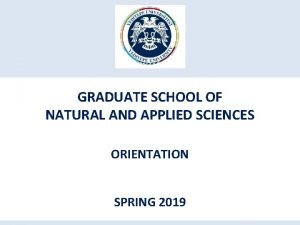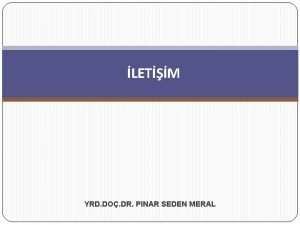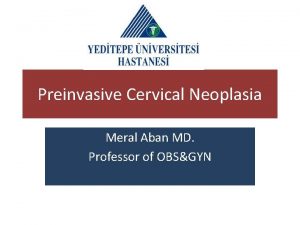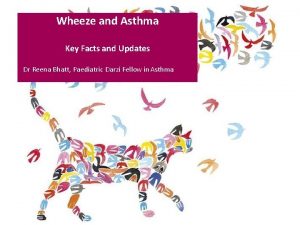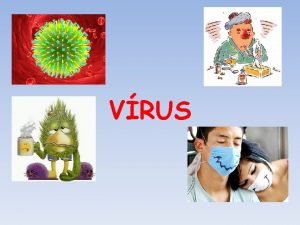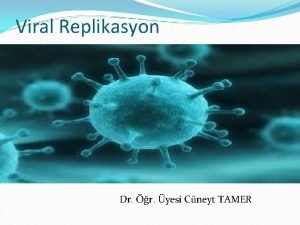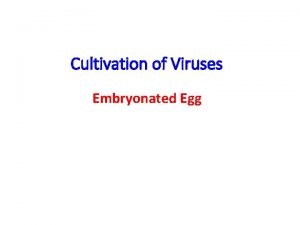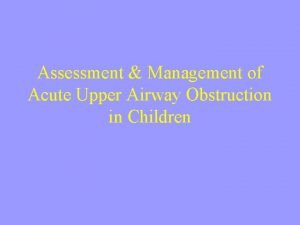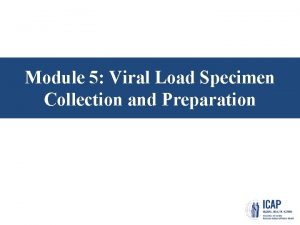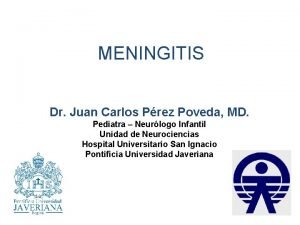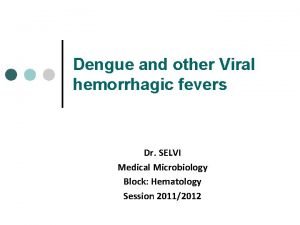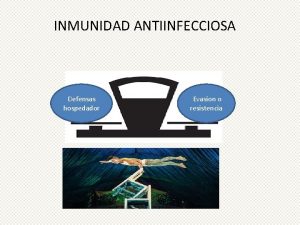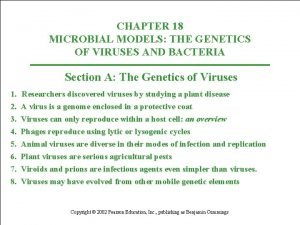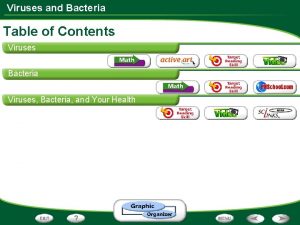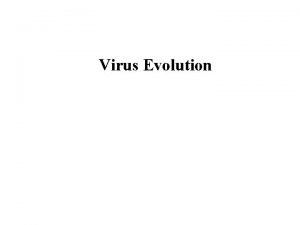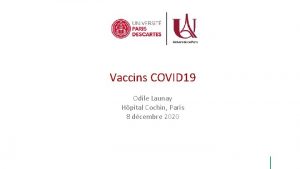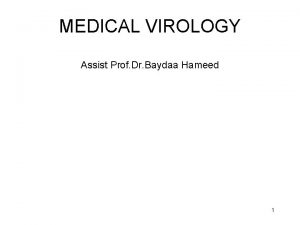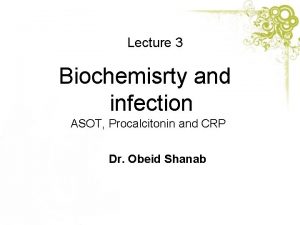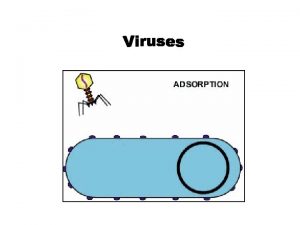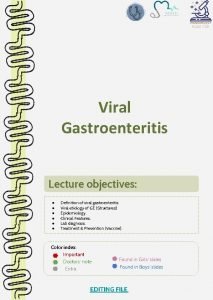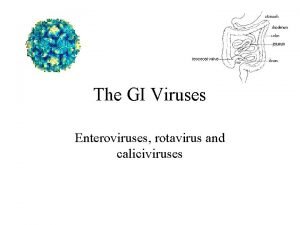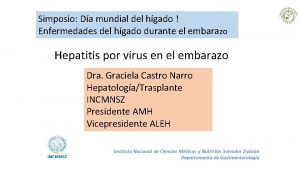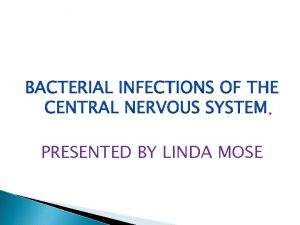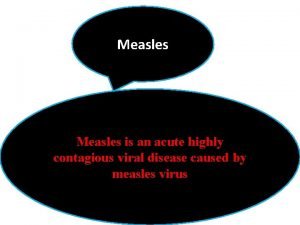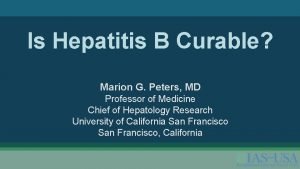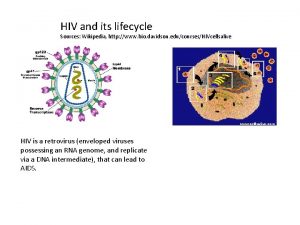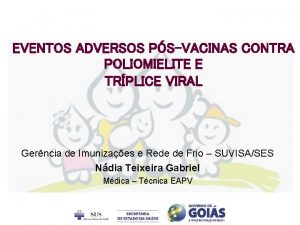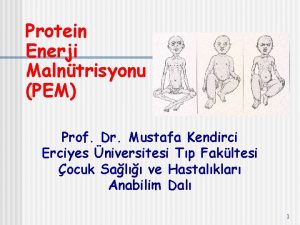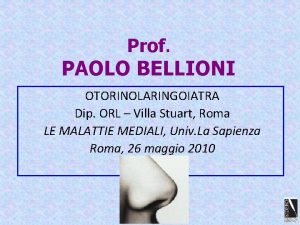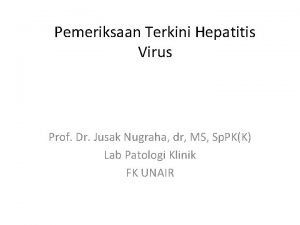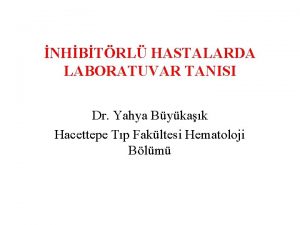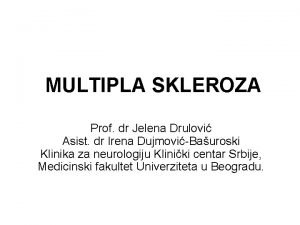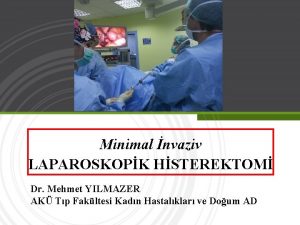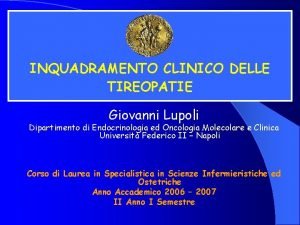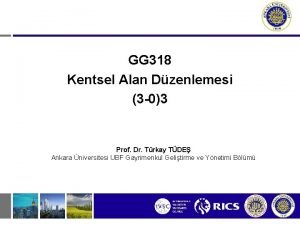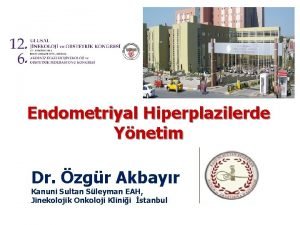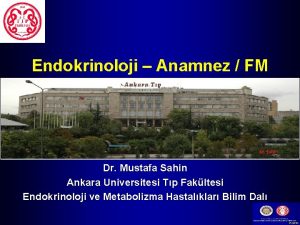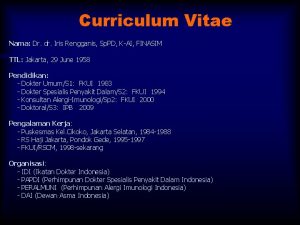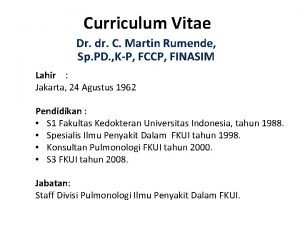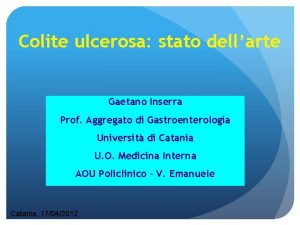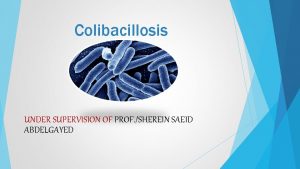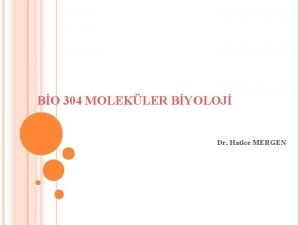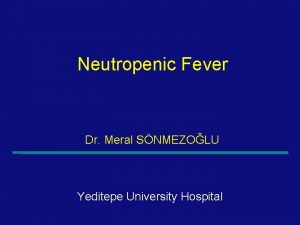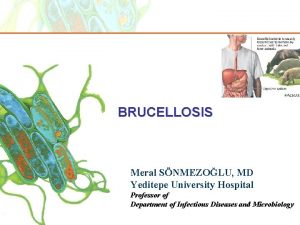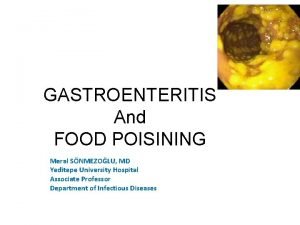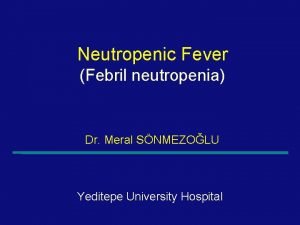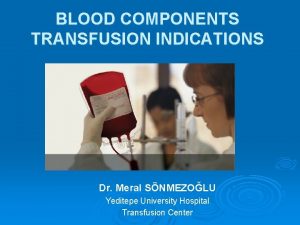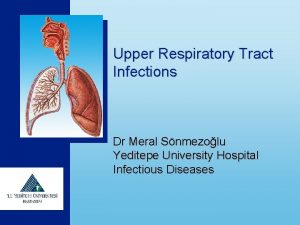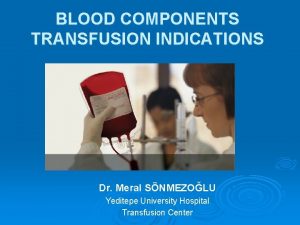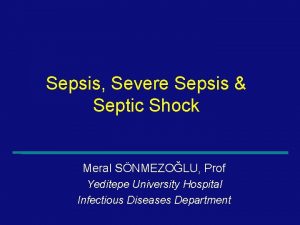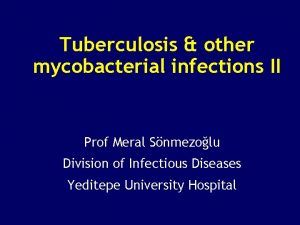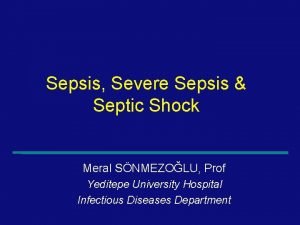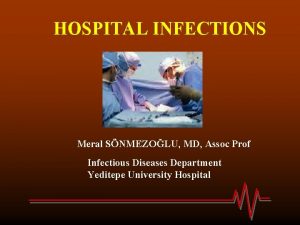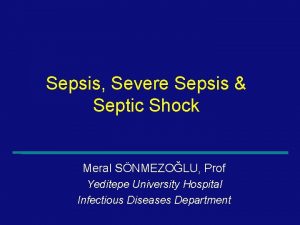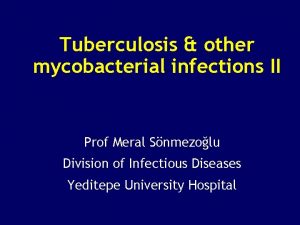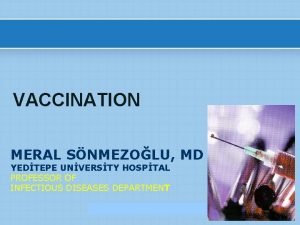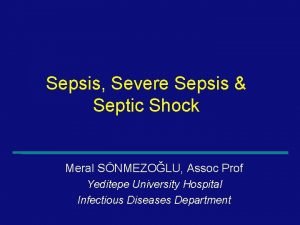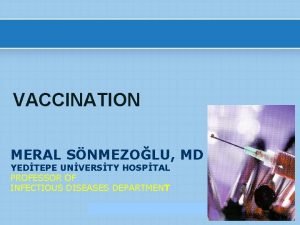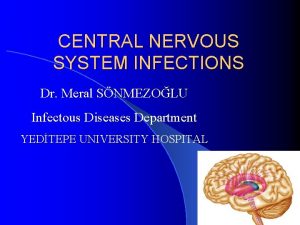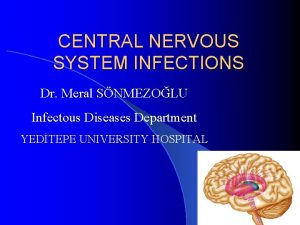VIRAL EXANTHEMS Prof Dr Meral Snmezolu Yeditepe University








































































































- Slides: 104

VIRAL EXANTHEMS Prof Dr Meral Sönmezoğlu Yeditepe University Hospital Copyright © 2010 Pearson Education, Inc.

Learning Objectives § List the causative agent, § Know epidemiology, pathogenesis, and pathology, clinical features, complications, diagnosisi and management of; Measles Rubella Parvovirus B 19 Varicella zoster Human Herpes Viruses Copyright © 2010 Pearson Education, Inc.

The Structure of Human Skin § Perspiration and sebum contain nutrients § Salt inhibits microbes § Lysozyme hydrolyzes peptidoglycan § Fatty acids inhibit some pathogens Copyright © 2010 Pearson Education, Inc. Figure 21. 1

Copyright © 2010 Pearson Education, Inc.

Microbial Diseases of the Skin § Exanthem: Skin rash arising from another focus of the infection § Enanthem: Mucous membrane rash arising from another focus of the infection Copyright © 2010 Pearson Education, Inc.

Skin Lesions Copyright © 2010 Pearson Education, Inc. Figure 21. 2

VIRAL SKIN INFECTIONS § Several common childhood viral infections; § § § Rubeola (Measles) Rubella (German measles) Varicella (Chickenpox) Erythema infectiosum (fifth disease) Erythema subitum (roseola) Echovirus-adenovirus Copyright © 2010 Pearson Education, Inc.

OTHER VIRAL SYNDROMES § § § § Pityriasis rosea (HHV 6, 7? ) Hand, foot and mouth disease Gianotti Crosti syndrome Haemorragic fevers Smallpox HIV infections Rickettsial diseases Copyright © 2010 Pearson Education, Inc.

LOCAL SKIN VIRAL INFECTIONS § § § Herpes simplex Herpes zoster Vesicular stomatitis Molloscum contagiosum Viral warts Copyright © 2010 Pearson Education, Inc.

CLIN. MAN. OF VIRAL INFECTIONS § Erythema multiforme § Erythema nodosum § Kawasaki disease Copyright © 2010 Pearson Education, Inc.

Measles (Rubeola) § Measles virus § Transmitted by respiratory route § Macular rash and Koplik's spots § Prevented by vaccination Copyright © 2010 Pearson Education, Inc. Figure 21. 14

Measles (Rubeola) § Encephalitis in 1, 000 cases § Subacute sclerosing panencephalitis in 1, 000 cases Copyright © 2010 Pearson Education, Inc.

Reported U. S. Cases of Measles, 1960– 2007 Copyright © 2010 Pearson Education, Inc. Clinical Focus, p. 505

Cases of Measles in Turkey Copyright © 2010 Pearson Education, Inc.

Copyright © 2010 Pearson Education, Inc.

MEASLES § Measles, also known as rubeola, is a disease caused by a virus, a member of the family paramyxoviridae, genus Morbillivirus § Measles is spread through respiration (contact with fluids from an infected person's nose and mouth, either directly or through aerosol transmission), § and is highly contagious— 90% of people without immunity sharing a house with an infected person will catch it. Copyright © 2010 Pearson Education, Inc.

MEASLES § The incubation period usually lasts for 7– 14 days (during which there are no symptoms). § Infected people remain contagious from the appearance of the first symptoms until 3– 5 days after the rash appears. Copyright © 2010 Pearson Education, Inc.

MEASLES § The wide dissemination of measles virus due to viremia, with associated infection of endothelial, epithelial, monocyte, and macrophage cells, may explain the variety of clinical manifestations and complications that can occur with measles infection. § A second viremia occurs several days after the first, coinciding with the appearance of symptoms which signals the beginning of the prodromal phase Copyright © 2010 Pearson Education, Inc.

MEASLES § Koplik's spots pathognomonic for measles infection and occur approximately 48 hours before the characteristic measles exanthem § The characteristic rash is maculopapular and blanches, beginning on the face and spreading centrifugally to involve the neck, upper trunk, lower trunk and extremities. § The lesions may become confluent, especially in areas such as the face where the rash develops first § The palms and soles are rarely involved. Copyright © 2010 Pearson Education, Inc.

MEASLES Copyright © 2010 Pearson Education, Inc.

MEASLES Copyright © 2010 Pearson Education, Inc.

Rubellavirus (Togaviridae; Rubivirus) Copyright © 2010 Pearson Education, Inc.

Rubella (German Measles) § Rubella virus § Macular rash and fever § Congenital rubella syndrome causes severe fetal damage § Prevented by vaccination Copyright © 2010 Pearson Education, Inc. Figure 21. 15

RUBELLA § Rubella (also known as epidemic roseola, German measles, liberty measles or three-day measles) is a disease caused by the Rubella virus. § It is often mild an attack can pass unnoticed. However, this can make the virus difficult to diagnose. The virus usually enters the body through the nose or throat. § The disease can last 1 -5 days. Children recover more quickly than adults. § It is passed from person to person by tiny droplets in the air that are breathed out. Copyright © 2010 Pearson Education, Inc.

RUBELLA § Rubella can pose a serious risk as it can also be transmitted from a mother to her developing baby through the bloodstream via the placenta. If the mother is infected within the first 20 weeks of pregnancy, the child may be born with congenital rubella syndrome, which includes a range of birth defects. § Incubation period of 12 -23 days § The name German measles has nothing to do with Germany. It comes from the Latin germanus, meaning "similar", since rubella and measles share many symptoms. Copyright © 2010 Pearson Education, Inc.

CONGENITAL RUBELLA Copyright © 2010 Pearson Education, Inc.

HERPES VIRUS TYPES THAT INFECT HUMANS § § § Herpes simplex virus Type 1 (HSV-1) Herpes simplex virus Type 2 (HSV-2) Epstein Barr virus (EBV) Cytomegalovirus (CMV) Varicella Zoster Virus (VZV) Human herpes virus 6 (exanthum subitum or roseola infantum) § Human herpes virus 8 (Kaposi's sarcoma-associate herpes virus) Copyright © 2010 Pearson Education, Inc.

Copyright © 2010 Pearson Education, Inc.

HERPES VIRUSES § Leading viral infectious agent after influenza and common cold viruses § After acute infection they may remain in the body and be reactivated. Copyright © 2010 Pearson Education, Inc.

Double Stranded DNA Virus Copyright © 2010 Pearson Education, Inc.

Herpes simplex Virus (HSV) § There are two types, HSV-1 and HSV-2 with very similar characteristics Copyright © 2010 Pearson Education, Inc.

Tzanck satin of herpes vesicle Copyright © 2010 Pearson Education, Inc.

Copyright © 2010 Pearson Education, Inc.

Herpes Simplex § § § Human herpesvirus 1 (HSV-1) and 2 (HSV-2) Cold sores or fever blisters (vesicles on lips) Herpes gladiatorum (vesicles on skin) Herpetic whitlow (vesicles on fingers) Herpes encephalitis HSV-1 can remain latent in trigeminal nerve ganglia Copyright © 2010 Pearson Education, Inc.

Copyright © 2010 Pearson Education, Inc.

Copyright © 2010 Pearson Education, Inc.

Cold Sores Caused by Herpes Simplex Virus Copyright © 2010 Pearson Education, Inc. Figure 21. 12

HSV-1 in the Trigeminal Nerve Ganglion Copyright © 2010 Pearson Education, Inc. Figure 21. 13

Herpes Simplex § HSV-2 can remain latent in sacral nerve ganglia § HSV-2 encephalitis: 70% fatality § Encephalitis treatment: Acyclovir Copyright © 2010 Pearson Education, Inc.

Genital Infections with HSV 2 Copyright © 2010 Pearson Education, Inc.

VARICELLA (Herpes Zoster Virus, Human Herpes Virus-3) This virus causes two major diseases, § Chicken-pox (Varicella), usually in childhood, and § Shingles, later in life. Shingles (Zoster) is a reactivation of an earlier varicella infection. Copyright © 2010 Pearson Education, Inc.

Chickenpox § § § Varicella-zoster virus (human herpesvirus 3) Transmitted by the respiratory route Causes pus-filled vesicles Virus may remain latent in dorsal root ganglia Prevention: Live attenuated vaccine Breakthrough varicella in vaccinated people Copyright © 2010 Pearson Education, Inc.

Copyright © 2010 Pearson Education, Inc. Figure 21. 11 a

Shingles § Reactivation of latent HHV-3 releases viruses that move along peripheral nerves to skin § Postherpetic neuralgia § Prevention: Live attenuated vaccine § Acyclovir may lessen symptoms Copyright © 2010 Pearson Education, Inc.

Copyright © 2010 Pearson Education, Inc. Figure 21. 11 b

Reactivation of VZV Copyright © 2010 Pearson Education, Inc.

VARICELLA § Incubation period is about 2 weeks (10 -23 dys) § Spreading of the disease in the respiratory tract (by a cough) or from contact with ruptured papulae on the skin containing infectious virus. § Contagious period starts at about 12 -14 days after the initial infection. Copyright © 2010 Pearson Education, Inc.

VARICELLA § During the 10 -12 day prodromal stage, the virus in the respiratory mucosa infects macrophages and pneumocytes. At this stage, there are no symptoms. § The virus spreads from the lungs to lymphocytes and monocytes and to the reticulo-endothelial system. Here, at about 5 days, a second viremia occurs and the virus travels to the skin, mouth, conjunctiva, respiratory tract and, indeed, to epithelial sites throughout the body. Copyright © 2010 Pearson Education, Inc.

VARICELLA § The virus leaves the blood vessels and first infects sub-epithelial sites and then epithelial sites forming papulae containing multinucleated cells with intracellular inclusions. § The virus reaches the surface and is shed to the exterior of the respiratory tract about 12 -14 days after the initial infection. It takes a little longer (a few days) for the virus to reach the surface of the skin when the characteristic papulae (rash) appear. § Patient have a fever for a few days (up to 39°C). Copyright © 2010 Pearson Education, Inc.

Skin Lesions Copyright © 2010 Pearson Education, Inc. Figure 21. 2

VARICELLA Copyright © 2010 Pearson Education, Inc.

Chicken Pox: Lesions at different stages simultaneously Copyright © 2010 Pearson Education, Inc.

Very contagious! Copyright © 2010 Pearson Education, Inc.

Varicella during pregnancy Copyright © 2010 Pearson Education, Inc.

Varicella during pregnancy Copyright © 2010 Pearson Education, Inc.

Varicella during pregnancy Copyright © 2010 Pearson Education, Inc.

Shingles: Seen on a dermatome § The skin lesions are somewhat different from those in chicken pox, being restricted to small areas of the skin, usually in the thorax, in an area where a nerve inervates the skin (dermatome). They are small and close together. They are maculopapular with an erythematous base and usually heal in about two weeks. Copyright © 2010 Pearson Education, Inc.

Copyright © 2010 Pearson Education, Inc.

Copyright © 2010 Pearson Education, Inc.

FIFTH DISEASE § Name derived from a 1905 list of skin rashes, which included § § § 1. Measles 2. Scarlet fever 3. Rubella 4. Filatov Dukes disease (mild scarlet fever), and 5. Fifth disease, or erythema infectiosum Human parvovirus B 19 produces mild flu-like symptoms and facial rash Copyright © 2010 Pearson Education, Inc.

FIFTH DISEASE (ERYTHEMA INFECTIOSUM) § § Especially common in children (5 -15 yrs) Caused by Parvovirus B 19 %30 asymptomatic Fifth disease typically produces a distinctive red rash on the face (slapped cheek) § The rash then spreads to the trunk, arms, and legs. Copyright © 2010 Pearson Education, Inc.

ERYTHEMA INFECTIOSUM § § Glove and stocking rash Generally not a serious condition Occurs everywhere in the world. Outbreaks tend to happen in the late winter and early spring, may also be sporadic cases throughout the year. Copyright © 2010 Pearson Education, Inc.

FIFTH DISEASE Copyright © 2010 Pearson Education, Inc.

HHV 6 and 7: Roseola Infantum Sixth Disease § Roseola (also known as sixth disease, exanthem subitum, and roseola infantum) is a viral illness in young children, most commonly affecting those between the ages of 6 months and 2 years. It is typically marked by several days of high fever, followed by a distinctive rash just as the fever breaks. § Two common and closely related viruses can cause roseola: human herpesvirus (HHV) type 6 and possibly type 7. Copyright © 2010 Pearson Education, Inc.

Roseola § Caused by human herpesvirus 6 (HHV-6) and 7 (HHV-7) § High fever and rash lasting for 1– 2 days Copyright © 2010 Pearson Education, Inc.

Roseola Infantum Copyright © 2010 Pearson Education, Inc.

Copyright © 2010 Pearson Education, Inc.

HHV 8 causes Kaposi’s sarcoma § Kaposi's sarcoma is a cancer that causes patches of abnormal tissue to grow under the skin, in the lining of the mouth, nose, and throat or in other organs. § The patches are usually red or purple and are made of cancer cells and blood cells. The red and purples patches often cause no symptoms, though they may be painful. If the cancer spreads to the digestive tract or lungs, bleeding can result. Lung tumors can make breathing hard. Copyright © 2010 Pearson Education, Inc.

Kaposi’s sarcoma § Before the AIDS epidemic, KS usually developed slowly. In AIDS patients, though, the disease moves quickly. Treatment depends on where the lesions are and how bad they are. Treatment for the AIDS virus itself can shrink the lesions. However, treating KS does not improve survival from AIDS itself. § KS is caused by a herpes virus called Human Herpes Virus 8 (HHV-8). In a recent study, men with HHV-8 were nearly 12 times more likely to be diagnosed with KS than men who did not have HHV -8 Copyright © 2010 Pearson Education, Inc.

Kaposi’s Sarcoma Copyright © 2010 Pearson Education, Inc.

Papillomavirus Human Papillomavirus § HPV is currently the most important papovavirus. Seventy strains of Human Papillomavirus have been identified so far. § These viruses are known for their role in causing warts (both common warts and genital warts) as well as their association with cancer. § Most people are infected with some strain of HPV in their lives. Copyright © 2010 Pearson Education, Inc.

Warts § Papillomaviruses § Treatment Removal Cryotherapy Electrodesiccation Salicylic acid Imiquimod (stimulates interferon production) Bleomycin Copyright © 2010 Pearson Education, Inc.

Skin and Genital Warts Copyright © 2010 Pearson Education, Inc.

Hand-foot-mouth disease § § § § Copyright © 2010 Pearson Education, Inc. Coxsackievirus A type 16 (CVA 16) is the etiologic agent involved in most cases of HFMD, but the illness is also associated with coxsackievirus A 5, A 7, A 9, A 10, B 2, and B 5 strains. Enterovirus 71 (EV-71) has caused outbreaks of HFMD. Sore mouth or throat Malaise Rarely, vomiting occurs in HFMD cases caused by EV-71 Initially, macular lesions appear on the buccal mucosa, tongue, and/or hard palate Lesions may also be found on the hands, feet, buttocks, and genitalia A fever of 38 -39°C may be present for 24 -48 hours

TUS 2012 § Aşağıdaki uygulamalardan hangisi sağlıkta “primer koruma” kapsamında yer alır? § A) Kızamık aşısı B) Bronkoskopi C) Cerrahi eksplorasyon D) Papsmear incili E) ELISA testi Copyright © 2010 Pearson Education, Inc.

TUS 2012 § Aşağıdaki uygulamalardan hangisi sağlıkta “primer koruma” kapsamında yer alır? § A) Kızamık aşısı B) Bronkoskopi C) Cerrahi eksplorasyon D) Papsmear incili E) ELISA testi Copyright © 2010 Pearson Education, Inc.

TUS 2012 § Kızamıkta ölüme en sık yol açan komplikasyon aşağıdakilerden hangisidir? § A) Otitis media B) Pnömoni C) Subakut sklerozan panensefalit D) Sinüzit E) Miyokardit Copyright © 2010 Pearson Education, Inc.

TUS 2012 § Kızamıkta ölüme en sık yol açan komplikasyon aşağıdakilerden hangisidir? § A) Otitis media B) Pnömoni C) Subakut sklerozan panensefalit D) Sinüzit E) Miyokardit Copyright © 2010 Pearson Education, Inc.

TUS 2012 § Otolojik muayenesinde dış kulak yolunda veziküler lezyonlar saptanan bu hasta için en olası tanı aşağıdakilerden hangisidir? A) Herpes zoster otikus B) Fronkülozis C) Nekrotizan otitis ekstema D) Büllözeksternal otitis E) Granüler eksternal otitis Copyright © 2010 Pearson Education, Inc.

TUS 2012 § Otolojik muayenesinde dış kulak yolunda veziküler lezyonlar saptanan bu hasta için en olası tanı aşağıdakilerden hangisidir? A) Herpes zoster otikus B) Fronkülozis C) Nekrotizan otitis ekstema D) Büllözeksternal otitis E) Granüler eksternal otitis Copyright © 2010 Pearson Education, Inc.

TUS 2012 § Üç gün süren yüksek ateşin düşmesinden sonra vücudunda tek makülopapüler döküntüler beliren, bir yaşındaki süt çocuğunda aşağıdaki hastalıklardan hangisi düşünülmelidir? § A) Kızamık B) Eritema infeksiyozum C) Kızıl D) Suçiçeği E) Roseola infantum Copyright © 2010 Pearson Education, Inc.

TUS 2012 § Üç gün süren yüksek ateşin düşmesinden sonra vücudunda tek makülopapüler döküntüler beliren, bir yaşındaki süt çocuğunda aşağıdaki hastalıklardan hangisi düşünülmelidir? § A) Kızamık B) Eritema infeksiyozum C) Kızıl D) Suçiçeği E) Roseola infantum Copyright © 2010 Pearson Education, Inc.

TUS 2010 Subakut sklerozan panensefalit aşağıdaki enfeksiyonlardan hangisinin komplikasyonudur? A) Kızamık B) Kızamıkçık C) Herpes simpleks virusu tip 1 D) Sitomegalovirus E) Herpes simpleks virusu tip 2 Copyright © 2010 Pearson Education, Inc.

TUS 2010 Subakut sklerozan panensefalit aşağıdaki enfeksiyonlardan hangisinin komplikasyonudur? A) Kızamık B) Kızamıkçık C) Herpes simpleks virusu tip 1 D) Sitomegalovirus E) Herpes simpleks virusu tip 2 Copyright © 2010 Pearson Education, Inc.

TUS 2010 § Suçiçeğinin en sık görülen komplikasyonu aşağıdakilerden hangisidir? § A) Serebellar ataksi § B) Miyokardit § C) Pnömoni § D) Nefrotik sendrom § E) Pankreatit § Copyright © 2010 Pearson Education, Inc.

TUS 2010 § Suçiçeğinin en sık görülen komplikasyonu aşağıdakilerden hangisidir? § A) Serebellar ataksi § B) Miyokardit § C) Pnömoni § D) Nefrotik sendrom § E) Pankreatit § Copyright © 2010 Pearson Education, Inc.

§ Bacterial Infection The most common complication of chickenpox is secondary bacterial infection of the chickenpox lesions. The bacteria most likely to cause infection are Staphylococcus aureus and Streptococcus pyogenes. § Neurologic Complications The second most common complication of chickenpox involves the neurological system. § One of these disorders is called acute cerebellar ataxia which causes progressive irritability, difficulty walking, difficulty with vision, and speech disturbances that persist for days or weeks but normally clear completely over time. Copyright © 2010 Pearson Education, Inc.

TUS 2012 § Aşağıdaki konjenital enfeksiyonların hangisinde mikrosefali görülmesi beklenmez? § A) Sitomegalovirus B) Herpes simpleks virus C) Rubella D) Toksoplazmozis E) Kabakulak Copyright © 2010 Pearson Education, Inc.

TUS 2012 § Aşağıdaki konjenital enfeksiyonların hangisinde mikrosefali görülmesi beklenmez? § A) Sitomegalovirus B) Herpes simpleks virus C) Rubella D) Toksoplazmozis E) Kabakulak Copyright © 2010 Pearson Education, Inc.

TUS 2013 § EBV VCA Ig. M (-) EBV VCA Ig. G (+) EBNA (+) olan hastanın durumu için aşağıdakilerden hangisi doğrudur? § a. Kronik aktif enfeksiyon b. Taşıyıcı c. Geçirilmiş enfeksiyon d. Aşılanmış e. ? Copyright © 2010 Pearson Education, Inc.

TUS 2013 § EBV VCA Ig. M (-) EBV VCA Ig. G (+) EBNA (+) olan hastanın durumu için aşağıdakilerden hangisi doğrudur? § a. Kronik aktif enfeksiyon b. Taşıyıcı c. Geçirilmiş enfeksiyon d. Aşılanmış e. ? Copyright © 2010 Pearson Education, Inc.

TUS 2013 § Çocuk hasta iki gün önce döküntü bir gün sonra oksipital lap, ateşi yüksek, döküntü makulopapüler tarzda, basmakla soluyor, boyunda başlıyor gövdeye yayılıyor tanı için ne istenir § a- Rubella Ig. M b- Rubella Ig. G c- CMV Ig. M § d- Rubeola Ig. M § e- Rubeola Ig. G Copyright © 2010 Pearson Education, Inc.

TUS 2013 § Çocuk hasta iki gün önce döküntü bir gün sonra oksipital lap, ateşi yüksek, döküntü makulopapüler tarzda, basmakla soluyor, boyunda başlıyor gövdeye yayılıyor tanı için ne istenir § a- Rubella Ig. M b- Rubella Ig. G c- CMV Ig. M § d- Rubeola Ig. M § e- Rubeola Ig. G Copyright © 2010 Pearson Education, Inc.

TUS 2013 § Daha önce suçiçeği aşısı yapılmamış 5 yaşındaki sağlıklı bir çocuk, suçiçeği geçiren bir çocukla temastan 3 gün sonra hastaneye başvuruyor. Bu çocukta suçiçeği enfeksiyonuna önlem olarak aşağıdakilerden hangisi yapılmalıdır? A) Varisella-zoster immünoglobulini B) Suçiçeği aşısı C) Standart immünoglobulin D) Oral asiklovir E) İntravenöz asiklovir Copyright © 2010 Pearson Education, Inc.

TUS 2013 § Daha önce suçiçeği aşısı yapılmamış 5 yaşındaki sağlıklı bir çocuk, suçiçeği geçiren bir çocukla temastan 3 gün sonra hastaneye başvuruyor. Bu çocukta suçiçeği enfeksiyonuna önlem olarak aşağıdakilerden hangisi yapılmalıdır? A) Varisella-zoster immünoglobulini B) Suçiçeği aşısı C) Standart immünoglobulin D) Oral asiklovir E) İntravenöz asiklovir Copyright © 2010 Pearson Education, Inc.

TUS 2013 § On dört aylık kız hasta, 3 gün devam eden yüksek ateşin düşmesinden sonra ortaya çıkan makülopapüler döküntü, iştahsızlık ve hâlsizlik yakınmalarıyla getiriliyor. Öyküsünden döküntülerin gövdesinden başladığı sonrasında boyun, yüz, üst ve alt ekstremitelere yayıldığı öğreniliyor. Bu hastada, aşağıdaki mikroorganizmalardan hangisi düşünülmelidir? A) Sitomegalovirus B) Herpes simpleks virus C) İnsan Herpes virus tip 6 D) Epstein-Barr virus E) Enterovirus Copyright © 2010 Pearson Education, Inc.

TUS 2013 § On dört aylık kız hasta, 3 gün devam eden yüksek ateşin düşmesinden sonra ortaya çıkan makülopapüler döküntü, iştahsızlık ve hâlsizlik yakınmalarıyla getiriliyor. Öyküsünden döküntülerin gövdesinden başladığı sonrasında boyun, yüz, üst ve alt ekstremitelere yayıldığı öğreniliyor. Bu hastada, aşağıdaki mikroorganizmalardan hangisi düşünülmelidir? A) Sitomegalovirus B) Herpes simpleks virus C) İnsan Herpes virus tip 6 D) Epstein-Barr virus E) Enterovirus Copyright © 2010 Pearson Education, Inc.

TUS 2014 Kızamık komplikasyonu olmayan? § § § Ensefalit Otit Menenjit Trakeit Nefrit Copyright © 2010 Pearson Education, Inc.

TUS 2014 Kızamık komplikasyonu olmayan? § § § Ensefalit Otit Menenjit Trakeit Nefrit Copyright © 2010 Pearson Education, Inc.

Complications associated with measles by organ system. Orenstein W A et al. J Infect Dis. 2004; 189: S 4 -S 16 © 2004 by the Infectious Diseases Society of America Copyright © 2010 Pearson Education, Inc.

TUS 2014 § B lenfositte latent kalan virüs? a) b) c) d) VZV EBV CMV HSV Copyright © 2010 Pearson Education, Inc.

TUS 2015 Copyright © 2010 Pearson Education, Inc.

TUS 2015 Copyright © 2010 Pearson Education, Inc.

§ QUESTIONS? Copyright © 2010 Pearson Education, Inc.
 Filiz bakar ateş
Filiz bakar ateş Coadsys exam
Coadsys exam Tr
Tr Meral yılmaz öğretmen
Meral yılmaz öğretmen Pınar seden meral
Pınar seden meral Meral güneş ergin
Meral güneş ergin Meral dogan
Meral dogan Protokol sıralaması
Protokol sıralaması Lugol
Lugol Aerochamber definition
Aerochamber definition Vrus
Vrus Section 24-1 viral structure and replication
Section 24-1 viral structure and replication Inklüzyon cisimcikleri
Inklüzyon cisimcikleri Method of cultivation of virus
Method of cultivation of virus Viral inoculation in embryonated egg
Viral inoculation in embryonated egg Egg inoculation diagram
Egg inoculation diagram Spasmodic croup
Spasmodic croup Varicela variola
Varicela variola Exocitose
Exocitose Hemolyzed serum sample
Hemolyzed serum sample Meningitis
Meningitis Causes of viral hemorrhagic fever
Causes of viral hemorrhagic fever Inmunidad
Inmunidad Viral infection
Viral infection Viral
Viral Viral recombination
Viral recombination Vaccins à vecteur viral
Vaccins à vecteur viral Viral receptors
Viral receptors Procalcitonin
Procalcitonin Equine viral rhinopneumonitis
Equine viral rhinopneumonitis Virus dna
Virus dna Dha mcq
Dha mcq Viral entry
Viral entry The dynamics of viral marketing
The dynamics of viral marketing Hepatitis viral
Hepatitis viral Csf findings in different meningitis
Csf findings in different meningitis Viral arthritis
Viral arthritis An acute highly contagious viral disease
An acute highly contagious viral disease Viral life cycle
Viral life cycle Antiperytique
Antiperytique Viral shedding
Viral shedding Eline's viral
Eline's viral Viral communications
Viral communications Itil wikipedia fr
Itil wikipedia fr Trplice
Trplice 詹景裕
詹景裕 Prof. dr. marcus eckert
Prof. dr. marcus eckert Prof agamenon roberto
Prof agamenon roberto Prof david toback
Prof david toback Dr ali hossain
Dr ali hossain Prof suganda tanuwidjaja
Prof suganda tanuwidjaja Th
Th Tfa domanda motivazionale
Tfa domanda motivazionale Plan texte argumentatif
Plan texte argumentatif Gatunek i rodzaj literacki syzyfowe prace
Gatunek i rodzaj literacki syzyfowe prace Prof. grace schneider
Prof. grace schneider Sonnet 29 poem analysis edna st vincent millay
Sonnet 29 poem analysis edna st vincent millay Prof maya devita
Prof maya devita Süperoksit dismutaz
Süperoksit dismutaz Obsatar sinaga
Obsatar sinaga Pem nedir tıp
Pem nedir tıp Sfi research professorship
Sfi research professorship Prof. bellioni otorinolaringoiatra
Prof. bellioni otorinolaringoiatra Www.ramlimusa
Www.ramlimusa Dr aris sudiyanto
Dr aris sudiyanto Brometo de ciclopentila
Brometo de ciclopentila Bilgin arda
Bilgin arda Prof dr halil ak
Prof dr halil ak Prof jusak nugraha
Prof jusak nugraha Prof umi narimawati
Prof umi narimawati Prof dr hayri ülgen
Prof dr hayri ülgen Prof tan malaka
Prof tan malaka Parenteral beslenme kontrendikasyonları
Parenteral beslenme kontrendikasyonları Prof. dr. fevziye toros
Prof. dr. fevziye toros Leddo vacaro
Leddo vacaro Prof tomasz targowski
Prof tomasz targowski Benzeri
Benzeri Prof msc
Prof msc Lemod solu
Lemod solu Prof jan papy
Prof jan papy Prof. dr mehmet yilmazer
Prof. dr mehmet yilmazer Mikrochimeryzm plodowo matczyny
Mikrochimeryzm plodowo matczyny Sweep line codeforces
Sweep line codeforces Fabrizio onida
Fabrizio onida Remerciements de stage
Remerciements de stage Prof. norbert pohlmann
Prof. norbert pohlmann Hunner lezyonu
Hunner lezyonu Prof. mirosław krajewski
Prof. mirosław krajewski Dr svetlana stanišić
Dr svetlana stanišić Solceller
Solceller Dott lupoli endocrinologo
Dott lupoli endocrinologo Prof dr mualla polat
Prof dr mualla polat Dop 2 318
Dop 2 318 Prof. dr biljana stojković
Prof. dr biljana stojković Prof.dr.özgür akbayır
Prof.dr.özgür akbayır Prof dr mustafa şahin endokrin
Prof dr mustafa şahin endokrin Dokter iris rengganis
Dokter iris rengganis Martin rumende
Martin rumende Kenantis
Kenantis Prof inserra policlinico catania
Prof inserra policlinico catania Under supervision of prof
Under supervision of prof Prof cybelle
Prof cybelle Sonnet 29 analysis edna st vincent millay
Sonnet 29 analysis edna st vincent millay Hatice mergen
Hatice mergen Prof. dr. qumrul ahsan
Prof. dr. qumrul ahsan


